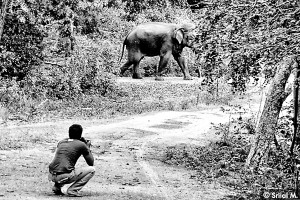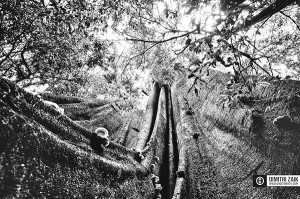Chasing his dreams
Dimitri Zaik is such a kaleidoscopic talent, that it can be quite impossible to pin him down. The Sri Lankan born, Melbourne-based artist recently made headlines when his original composition ‘Antigen Society’ off his debut album was placed as a ‘Finalist Winner’ of the highly competitive John Lennon Songwriting Contest 2014.
 A passionate environmentalist, Dimitri is also a photographer and writer. An excerpt from ‘Ink Bleeder’ – “I want to be alone… with someone else who wants to be alone” – earned him more than half a million shares, reblogs, memes and retweets. As a photographer, his work was among those selected in 2012 to illustrate author Neil Gaiman’s collaborative project with Blackberry in their Keep Moving Campaign- ‘A Calendar of Tales’.
A passionate environmentalist, Dimitri is also a photographer and writer. An excerpt from ‘Ink Bleeder’ – “I want to be alone… with someone else who wants to be alone” – earned him more than half a million shares, reblogs, memes and retweets. As a photographer, his work was among those selected in 2012 to illustrate author Neil Gaiman’s collaborative project with Blackberry in their Keep Moving Campaign- ‘A Calendar of Tales’.
His long obsession and current project is ‘A Dandelion Clock’, which he describes as a three-part fable, told over a series of books, soundtracks, graphic novels and film clips. “Each chapter of the story is told through different, interwoven media sources: one track off the album, one section of written story, a video clip, and a short comic panel. Included within these are supplementary artworks and performances by dancers and circus artists.”
Meanwhile, Dimitri’s ties with Sri Lanka remain strong. From his childhood memories of UdaWalawe to his gratitude to teachers and supporters like Noeline Fernando and Christopher Prins. (He identifies the latter “as the single most valuable mentor I have ever come across.”).
In this email interview with the Sunday Times Magazine, Dimitri talks about the challenges he’s faced – from financial insecurity to coping with a diagnosis of colour blindness. Below are excerpts:

In the wild: One of Dimitri’s photographs and (right) Dimitri photographing an elephant (Pic by Srilal Miththapala)
Q: What was it like growing up in Sri Lanka? Who were the most influential people in your life then?
I pretty much grew up in the jungle. UdaWalawe mostly. I have mother and father to thank for that. The jungle was home and everything else was somewhere that I had to be for an amount of time. Mother Earth perhaps is the best teacher. She’s been around for so long after all.
My two grandfathers probably were two of the most important personalities in my life and influenced me the most as they were both fascinating men. One being a surveyor and artist, the other a Meteorologist, watch maker and astrologer. Growing up was pretty much sitting on their laps in the old family homes and listening to their adventures and life lessons. One taught me to navigate the stars and the other one how to listen to what they were saying. I think perhaps most of the magic in my work comes from a hybrid tale of the two of them.
Q: You live and work in Melbourne now, but do you trace any part of your artistry to your Sri Lankan heritage?
Parippu. Without parippu there is no artistry there is no creation.
One of the first instruments I played was a “Gata Beraya” I learnt under the highly respected and acclaimed drum master Ravi Bandu for a few years. Local folklore and history and the links to both astrology and resonating vowels and the impact of frequency that is still very much a part of the culture are things that have always fascinated me.
Our heritage vannam almost always carry some sort of a tale within them and my early link to the traditional dance melodies and percussion beats always made me drift off into these tales and wonder what the original composer’s message might have been.

Dimitri’s Sri Lankan collaboration with Kalpanee Gunawardana
Q: You’ve frequently spoken of finding that the education system did nothing to nurture your creativity –being diagnosed as colour-blind seems to have only increased that sense of rejection. How did you overcome those challenges in a career that spans multiple mediums, not just music but photography, graphic art and design?
I learned when I was quite young that I was colour-blind, and from that moment was immediately told that I was unable to take art, or do photography, in the education system. This continued to be the case all through my education. Later, I was not allowed to take the tertiary course I was accepted into for the same reason. I was discouraged by my early music teachers from continuing to play music – first guitar, and later drums (so I ended up being self-taught on the musical front) – but there were also people who did support me.
My grandfather was probably the first of the handful. He would hear none of the negativity about my colour blindness, and made sure that I painted. But once he passed away there was no one there to pick the colours out of the box for me – and I stopped dabbling with colour for the longest time.
But then something happened – one of those moments that could very well be one’s own imagination, a trick of the light or a deep rooted calling. And I just needed to work with colour again. And with the digital age upon me full blown and accessible with the support of immediate family I decided that my colour blindness was something to promote, not hide from.
Q: How challenging has it been to make it as an independent artist?
Chasing down a dream is a struggle. To do what you love and to be able to sustain one’s life is an even bigger struggle. I don’t think the struggle is anywhere close to being over. I spent most of January sleeping in train stations and surviving on one meal a day because I stay too far from the city and most of the time I would miss the last bus home. I also had to save up to seize my opportunity to meet Gaiman and Amanda Palmer, which was a once in a lifetime opportunity. I also needed to acquire whatever equipment I could to start filming.
Each day I reach a point where my self-doubt peaks, because there’s no visible end to the struggle, or I put something out there that has taken nothing short of blood and tears to create and it gets no traction or views whatsoever. But then somewhere in the gloom, in some godforsaken corner of cyberspace, you find someone who has not only shared something you created – but also added a soul-felt ‘Thank You’ note to it. I believe I am simply proving this point. It can be done. The Independent artist can make it. They must. It is very much needed in this world of plasticine and meaningless glamour.
Q: When the ‘Ink Bleeder’ quote went viral, what did it feel like to know your work had resonated with so many people? Has it taken on a life of its own?
I honestly had no idea till one of my long time acquaintances messaged me from the States and said “have you Googled yourself lately?” I had not. She linked me to Tumblr where I discovered the impact it had made. We’ve since then found it on book covers, the twitter account of Justin Beiber’s ex-girlfriend and hand-sewn collectibles in the “most-popular” section on etsy to name a few of the most mind-boggling. So yes, clearly the beast has a life of its own.
Q: How would you like to see your career evolve? What are you working on currently?
The end goal right now is to see “A Dandelion Clock” completed, and then to make it to the stage as a live musical production. That is what all my current time is allocated to. Scarlet Nerve and Ghost Nerve will stay updated with side collaboration projects. Talia (My dream polisher/editor) who is the only soul who knows the full story, in all its convoluted forms, seems to think the big screen is the ultimate prize.


